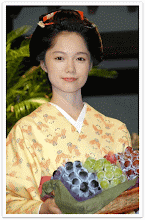On our recent trip for our newborn sons's Hatsumiyamairi, we took the opportunity to visit Microsoft Co-Founder Paul Allen's unique Flying Heritage & Combat Armor Museum in Everett Washington. Special emphasis on the word Flying because many of the vintage warbirds are airworthy and do participate in airshows. Like many air museuems that house WWII fighter aircraft, you'll see the ususal compliments of P-51 Mustangs, F-4U Corsairs, ME-109's, but rarely Japanese warbirds. Paul Allen happens to have two such Japanese fighters that are flyable. een here in the above photo is the Nakajima Ki-43 Hayabusa aka the Peregrine Falcon. This fighter was the Japanese Imperial Army's answer to the famed A6M Reisen Zero fighter flown by the Japanese Imperial Navy. Major Tateo Katō famously claimed 18 aireal victories in a Hayabusa. As you can see, this one is in pristine condition. The front desk guy informed us that if the planes are leaking oil, they fly and you can see there is an oil pan collecting leaking oil underneath the plane. This is the second Hayabusa we have encountered and pleased to report she is well cared for. The other Ki-43 sits in a state of neglect in lonely dark conrer of the Pima Air Museuem collecting dust.
Moving onto Hangar B, we came to see their famous A6M3-22 Reisen "Zero" fighter flown by the Imperial Japanese Navy. Much like our first encounter with the Saipan Zero at Chino's Planes of Fame, this famous plane noted for it's unique tiger stripe camoflauge paint scheme was in a state of overhaul with it's engine removed for maintenence. We were naturally bummed to see her in this state but as the son of an aircraft mechanic we do understand these 75 year old warplanes need maintence and extra loving care to preserve them and keep them flying. This is one of 6 known flying Zeros in the world and now we have seen 4 out of the six. Hopefully we will see her again in one peice flying in formation to the delight of military avaiation enthusiats & historians alike for years to come.






































